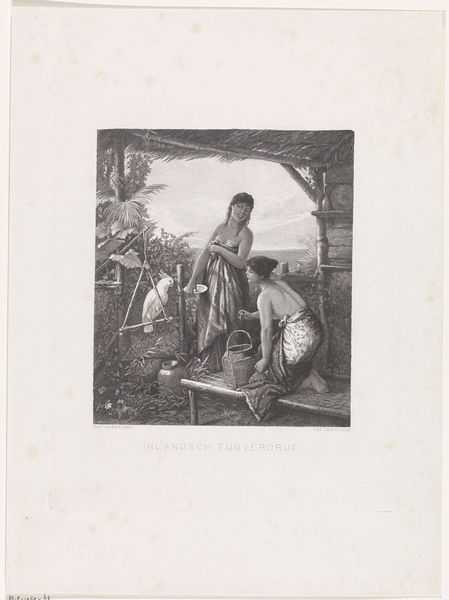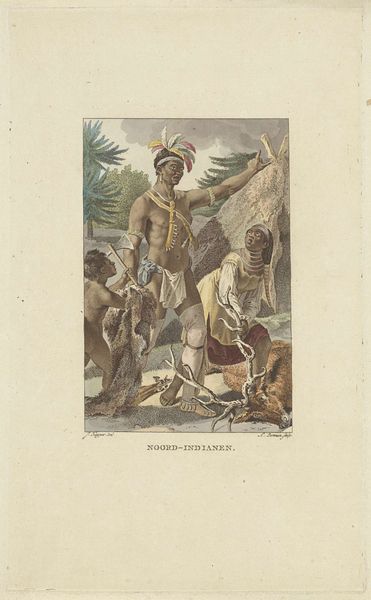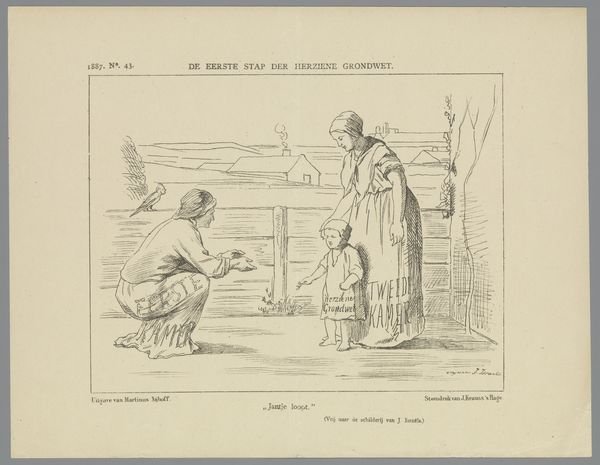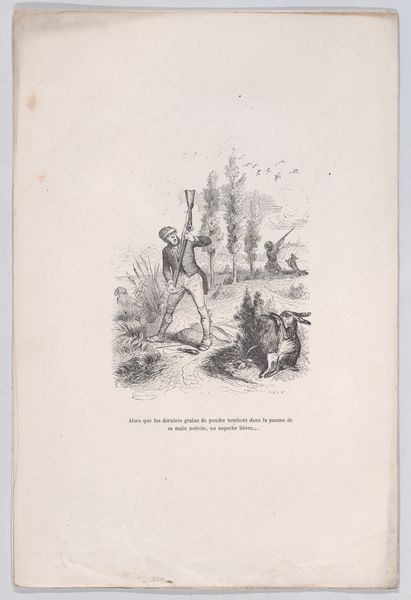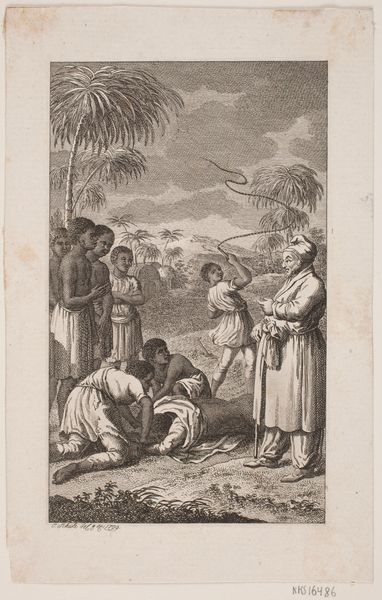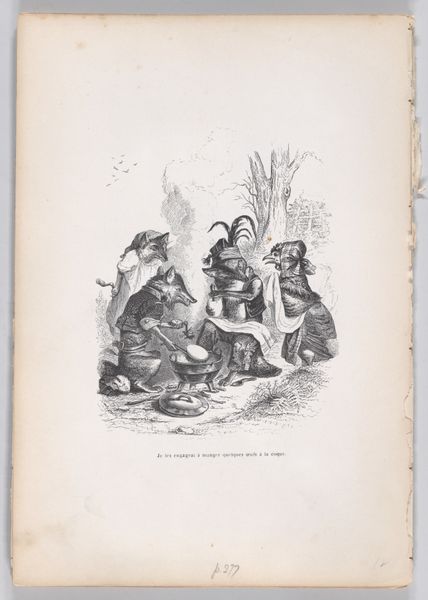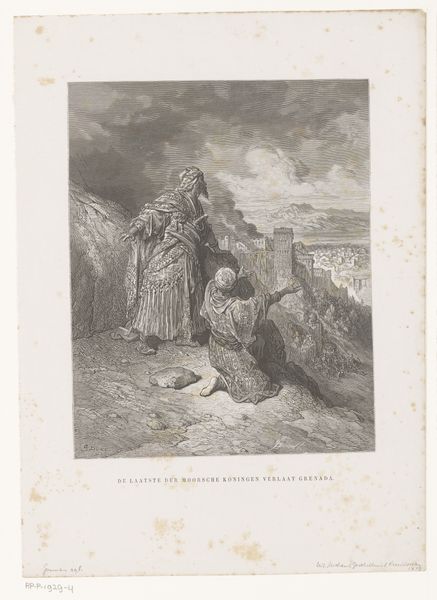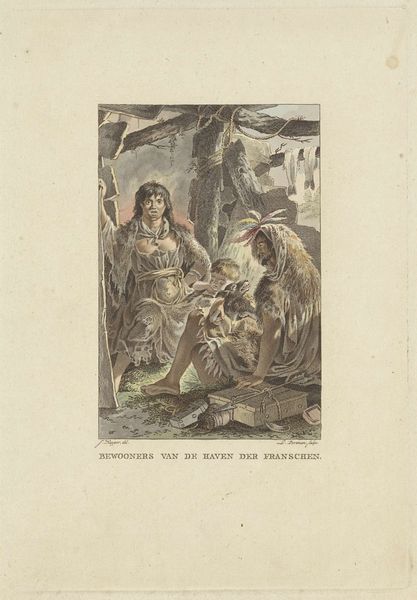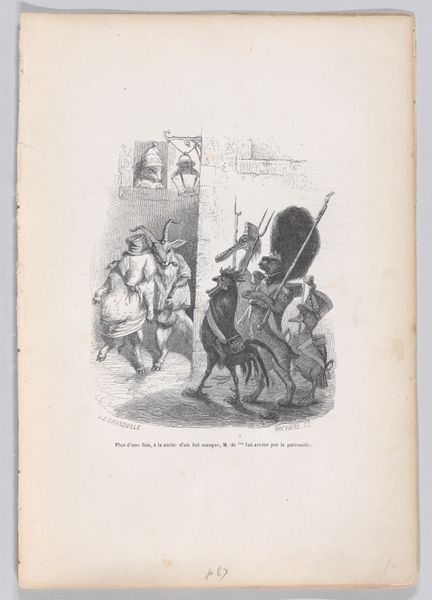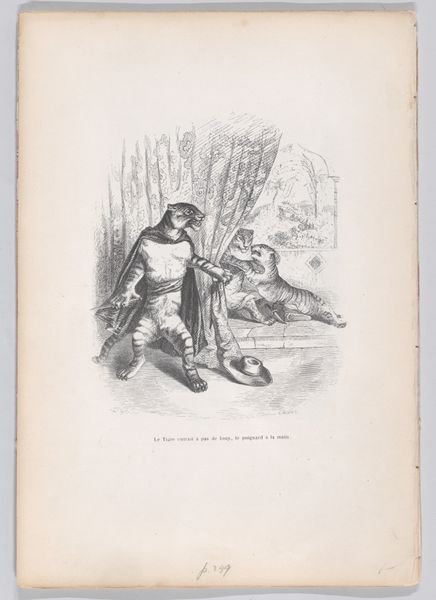
drawing, lithograph, print
#
drawing
#
lithograph
# print
#
figuration
#
romanticism
#
history-painting
Dimensions: Sheet: 8 5/8 × 5 1/2 in. (21.9 × 14 cm)
Copyright: Public Domain
Curator: Good afternoon. We are standing before an evocative image titled "Psara," from "The Complete Works of Béranger," crafted by J. J. Grandville in 1836. It’s a lithograph, a print, that now resides here at the Metropolitan Museum of Art. Editor: Well, it's… intense. My first thought is one of violence and despair, but strangely enough, there is this kind of resolute stance about the central figure. What do you think, considering its historical significance? Curator: Absolutely. The image directly alludes to the Destruction of Psara, a harrowing event during the Greek War of Independence in 1824. The Ottoman Empire's devastation of the island resulted in the massacre of its inhabitants and enslavement of survivors. Grandville seizes on this moment of conflict. Editor: Okay, seeing that history paints it differently... I still get this defiant sort of courage emanating from this character amidst chaos! I mean, is he protecting the refugees? Who are those poor souls underneath? Curator: Most likely Grandville portrays here one of the Greek survivors but in the glorification of their supposed power. That figure dominates the composition. This man stands amidst the fallen bodies of the defeated islanders, one foot stepping on a corpse, gripping heads. The details, the stark contrast between his form and the limp bodies around him, speaks to the dehumanizing consequences of war and imperialism. Editor: Yes, definitely. There is that disturbing detachment that makes me very uneasy! Also, look at how the Romantic movement style romanticizes this moment to fit an agenda! That’s Grandville! What kind of subliminal impact does such a dramatic, historicized imagery still create for us, in a contemporary moment? Curator: That’s the critical tension in history painting like this. In 19th-century France, lithographs had a significant social and political impact and often acted as historical and political commentary of current issues, particularly those related to colonialism and national identity. In the construction of history, we also see its selective memory, and even its constructed amnesia. Editor: Thanks. That offers a haunting context. Well, on second thought... It does linger, doesn’t it? The image becomes more than just a historical depiction, more like a potent reminder, isn’t it? Curator: Indeed, it is a chilling memento, one with symbols of loss, memory, and political violence, that continue to reverberate across time.
Comments
No comments
Be the first to comment and join the conversation on the ultimate creative platform.

